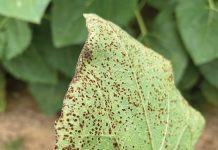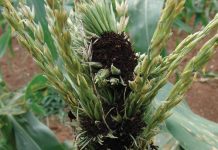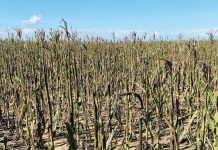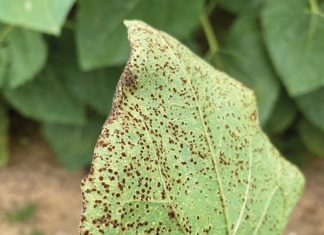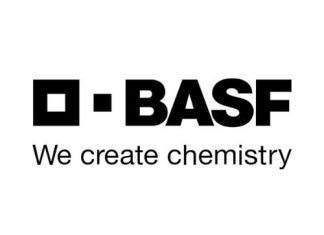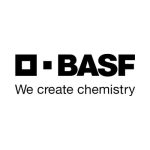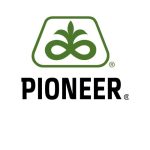
lead for plant biotechnology, CropLife SA
The dictionary definition of stewardship means ‘to take care of something’. Within the plant biotechnology context, stewardship is defined as the responsible introduction and use of biotech-derived products across the entire plant product life cycle – from idea, through development and launch, to discontinuation.
Stewardship extends beyond regulatory compliance. It requires a coordinated effort from stakeholders along the product value chain to preserve the efficacy of the introduced biotech trait and to ensure that the benefits to sustainable agriculture are realised.
Insect-resistant (IR) maize
Over the past 20 years, South African maize growers have rapidly embraced biotech crops with a built-in insecticidal protein that provides protection against targeted maize pests such as maize stalk borer (Busseolla fusca). Biotech maize varieties, expressing a range of different insecticidal proteins from the naturally occurring soil bacterium, Bacillus thuringiensis (Bt), have been commercially approved by South African regulators as single or stacked Bt traits. By 2018, an estimated total of 2 million ha of biotech maize was grown in South Africa. These comprised of 207 000 ha of insect-resistant (IR) maize, 460 000 ha of herbicide-tolerant (HT) maize and 1,3 million ha of stacked IR/HT maize (ISAAA, 2019).
Despite the successful adoption of biotech maize by growers, continued accrual of benefits is largely dependent on proper stewardship of available Bt crops to sustain its effectiveness as a pest management tool. With Bt insect resistance having already been documented in South Africa, the deployment of insect resistance management (IRM) strategies is a crucial component of an integrated pest management (IPM) system under the stewardship life cycle approach.
IRM – old problem, new technology
The purpose of IRM is to maintain the effectiveness of Bt crops as an insect pest management tool by preventing or delaying the development of insect resistance to inherent Bt traits. It is important to note that resistance is not a unique concern for biotech-derived crops and remains an ongoing challenge for other types of pest management applications.
Implementation of resistance management is generally mandated wherever Bt crops have been commercialised, including South Africa. In terms of the Genetically Modified Organisms Act (No. 15 of 1997), technology permit holders are required to do the following:
- Monitor resistance management strategies.
- Develop a surveillance plan for detecting resistance development.
- Undertake grower educational programmes.
- Develop a compliance management plan to counteract resistance development.
A key component of a resistance management programme is the adoption of a refuge strategy, where the concept of a ‘refuge’ is defined as a non-Bt planting area that supports the production of Bt-susceptible insects.
Refuge strategy – how it works
Growers using Bt maize are required to plant a refuge area of non-Bt maize. The refuge maintains a population of susceptible insect pests not exposed to selection pressure from the Bt protein. These susceptible insects would be available in high enough numbers to breed with resistant insects that emerge in the Bt crop field, ensuring that susceptibility is passed on to offspring, helping to prevent the emergence of resistant populations over time.
Refuge management options available to maize growers locally is to plant a refuge within 400 m adjacent to their Bt-cultivated maize fields that is either 1) a minimum 5% non-Bt maize refuge that is not treated with an insecticide or 2) a 20% non-Bt maize refuge that may be treated with a registered non-Bt-containing insecticide or biopesticide.
The diversity of producers and farming practices in South Africa does not allow for a one-size-fits-all approach. It is crucial that growers in the different regions, planting different maize varieties with different combinations of biotech traits, work closely with technology developers, seed suppliers and distributors, grower advisers and extension services to receive the necessary technical support and ensure refugia management compliance that is compatible with local agricultural practices.

Source: Excellence through stewardship (ETS), 2009.
Good IPM is good resistance management
Resistance management by way of refugia represents just one of the various tools to reduce selection pressure for resistance. A robust resistance management plan needs to match the best available insect resistant technology to combat the targeted pest with due consideration to the local environment and agricultural practices in an integrated manner. Apart from the refuge strategy, other important considerations in IPM and resistance management strategies for Bt crops include the following:
- Knowledge of major pest biology and ecology.
- Understanding the efficacy of available insecticidal traits.
- Selection of locally adapted crop varieties.
- Understanding local cropping systems.
- Scouting and monitoring for target pest damage.
- Application of alternative pest management options when needed.
- Grower education and training on responsible use.
Maximise benefits, minimise risk
The value of insect management technologies such as the use of Bt crops within the agricultural landscape cannot be disputed. However, Bt crop technology on its own is not an all-encompassing pest management solution as its effectiveness and sustained use are dependent on a diverse range of integrated pest management practices, including IRM. Efforts directed at education, knowledge transfer and training are critical to ensure that there is stewardship compliance for biotech crops.
Most important to remember is that biotech stewardship is a shared responsibility, requiring a coordinated effort from stakeholders along the product value chain to maximise sustainable production of Bt crops, while minimising losses and protecting biodiversity and the environment. CropLife SA is committed to stewardship initiatives that ensure safe, effective and responsible use of plant biotech products within a holistic IPM strategy as part of the product stewardship life cycle approach.



